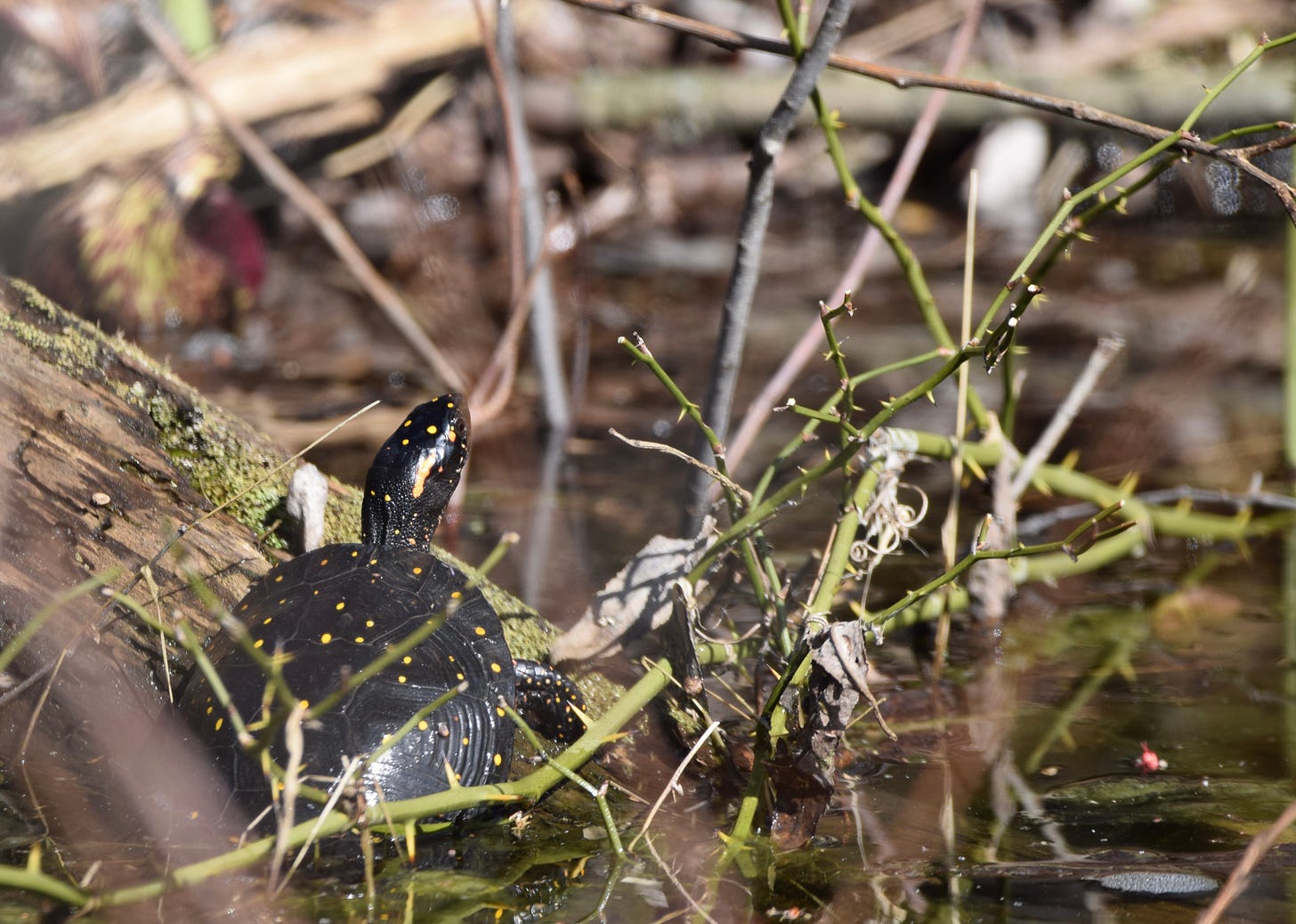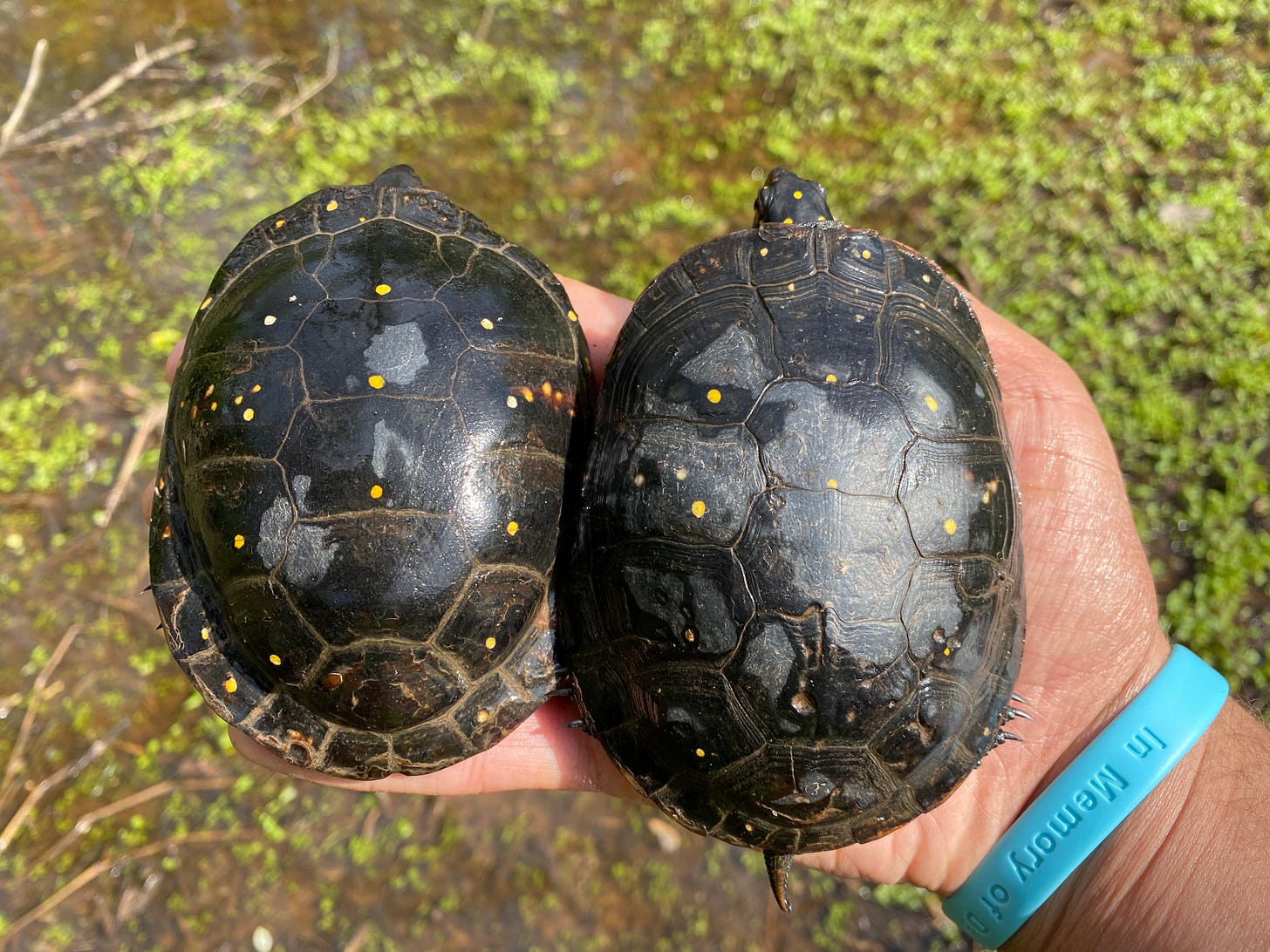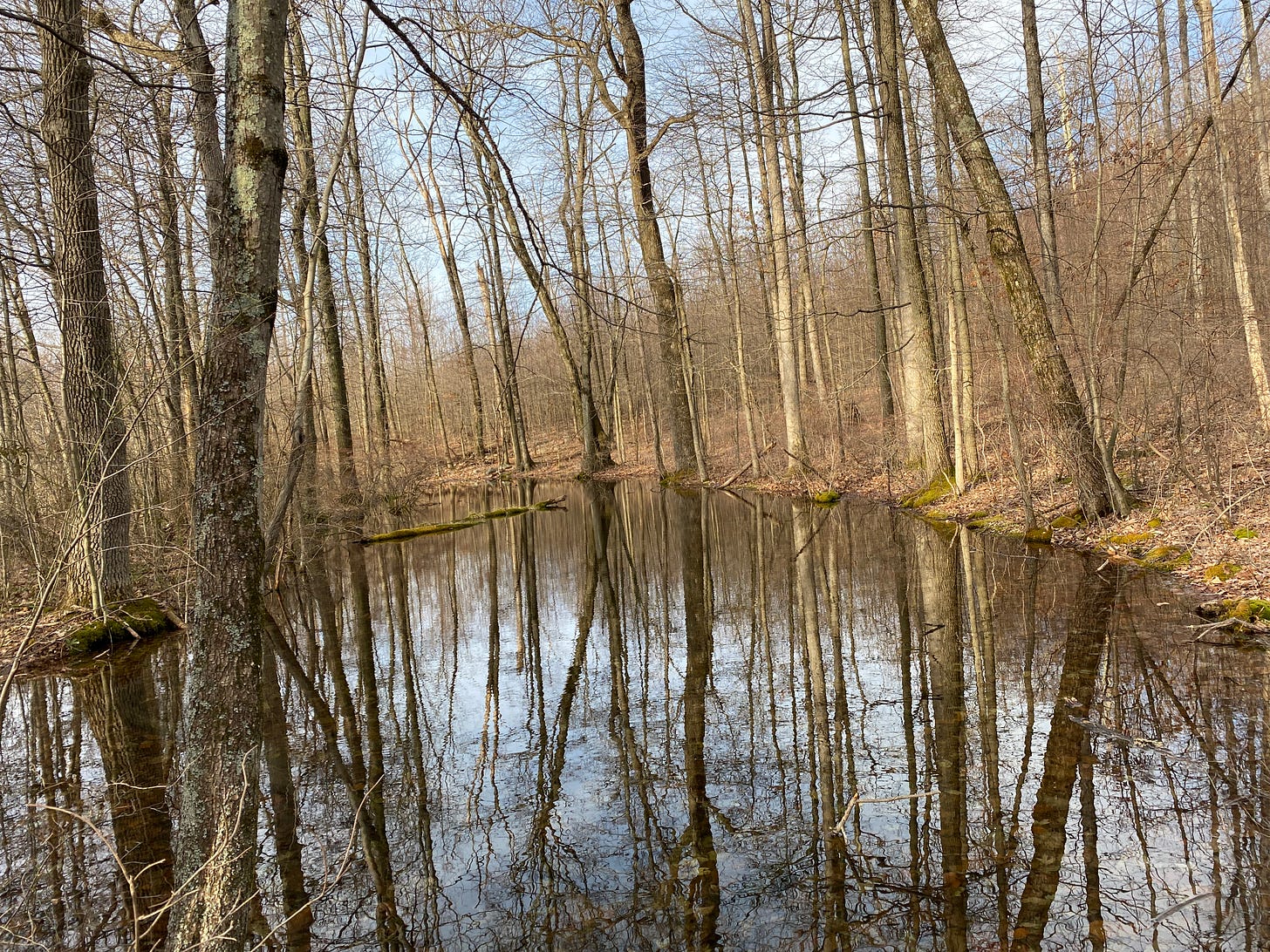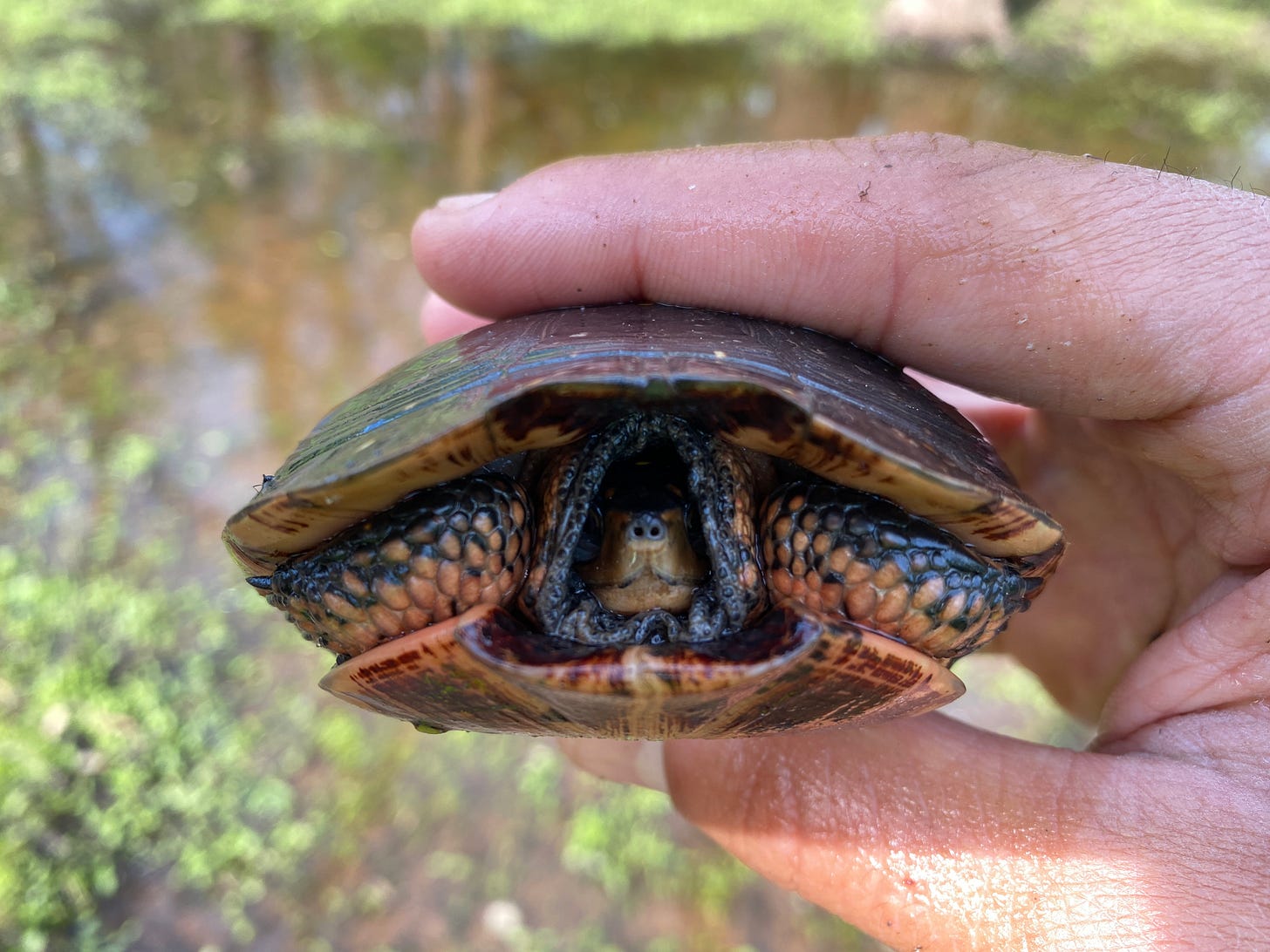A handful of species get to bask in the light of public appreciation. We’ve been sleeping on quite a few. Here’s one:
Spotted Turtle (Clemmys guttata)
Spotted Turtles tend to swim under the radar. They’re tiny, difficult to spot, and are inactive for most of the year. For all of those reasons, I don’t think most people even know that they exist. For those not in the know, here’s a brief introduction to what I’d consider an underappreciated reptile.
NAME: This species was named with little to no creativity, which is just how I like my common names. Their all black shells are adorned with tiny yellow spots, hence the name. Their specific epithet, guttata, stems from the Latin word “gutta” which actually means “spot”.
Some individuals have more spots than others. This gent represents his species really well.
SIZE: Spotted Turtles are actually one of the smallest turtle species in all of North America. They max out around 4.5 inches, rivaled only by Bog Turtles and Musk Turtles with respect to being tiny. Their stature fits well with their temperament, which is a bit nervous and non-confrontational.
Two fully grown adults, fitting neatly in one hand.
DIET: This species is by no means picky. Spotted Turtles will consume a variety of plant and animal life. Some items on the menu include various types of amphibians, worms, gastropods, aquatic plants, and even fruit.
Larval amphibians, like this larval Marbled Salamander, have to be careful when coexisting with Spotted Turtles.
HABITAT: Just as Spotted Turtles consume a variety of foods, they occupy a variety of habitats too. They can be found in swamps, marshes, bogs, and even smaller wetlands like vernal pools. They’re often found in mucky natural areas with an abundance of vegetation where they can hide but also bask. The density that they like their vegetation makes getting a decent photograph of them quite the challenge. There always seems to be a branch or a sedge conveniently in the way.
Vernal pools, like the one pictured here, are one of many types of wetlands that Spotted Turtles utilize.
REPRODUCTION: This species reaches sexual maturity between 7-15 years of age. Mating occurs in spring, and nesting typically occurs in late spring and early summer. Females will lay an average of 3 eggs, but clutch sizes can range from 1-14 eggs. Their eggs hatch in late summer, and it’s been documented that some hatchlings will actually overwinter in the nest and won’t emerge until the following spring.
CONSERVATION STATUS: Spotted Turtles, sadly, aren’t doing too well in a large portion of their range (source: https://explorer.natureserve.org/Taxon/ELEMENT_GLOBAL.2.100580/Clemmys_guttata).
They face many threats, including but not limited to habitat destruction, road mortality, and poaching. Invasive species choke out their wetlands, and taller invasives like Phragmites block out the sunlight as well. It doesn’t help that they have a late age at maturity, low fecundity, and poor juvenile survivorship.
Luckily, there have been efforts to protect some of the places where this species occurs. Whether it be via conservation easements or state agencies and their game lands, people have done a lot to protect Spotted Turtles and plenty of other declining species. Of course, the preservation of land isn’t enough to protect biodiversity. Controlling invasives, monitoring populations, and safeguarding wetlands are all important initiatives to protect this species, and others for that matter.
Dangerous world for a turtle. I don’t blame you buddy.
PARTING THOUGHTS: I absolutely love Spotted Turtles. They, along with Ribbon Snakes and Wood Turtles, are a part of the first suite of reptiles I get to welcome back every spring. They more or less disappear once the weather gets hot, and their ephemeral nature is one of the many reasons I cherish finding them. As a wildlife photographer, I also appreciate the challenges they present. As I mentioned, they live in some pretty mucky, densely vegetated environments. They also have incredible eyesight, so they’ll often dip into the water long before my finger reaches the shutter.
Their somewhat close relative, the Bog Turtle, is pretty well known, largely because it’s a thorn in the side of greedy developers. I hope Spotted Turtles won’t need an endangered status to become recognizable to the public. They’re spectacular turtles, and I wish more people knew.
As always, thanks for reading.
-Sebastian Harris











If I could wave a magic wand, one of my first acts would be to solve the road danger problem for wild animals, especially turtles. Without that wand, I do what I can, safely and respectfully. But yeah, love the spotted turtle!
If I could wave a magic wand, one of my first acts would be to completely solve the road danger for wild animals, especially turtles. Without that wand, I do what I can when it is safe. But yeah, love the spotted turtle!